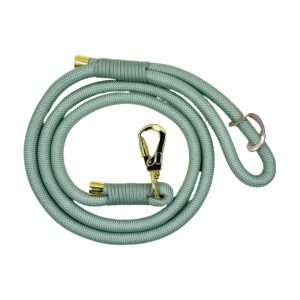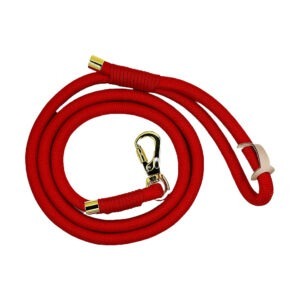Introdução
The Mastiff breed, known for its grand size and gentle nature, is one that comes with unique needs and care requirements. Weighing up to 230 pounds, this gentle giant is as affectionate and loyal as they come, making them an excellent addition to many families. However, because of their size, the dietary and exercise needs of Mastiffs are different from those of smaller dog breeds.
It is crucial for Mastim owners to understand these needs to ensure their dog lives a long, healthy life. This guide provides a comprehensive look at the dietary and exercise requirements of Mastiffs. By understanding and implementing these needs, owners can ensure their Mastiffs not only have a better quality of life but also live their lives to the fullest potential.
Whether you are a prospective Mastiff owner or already have a Mastiff in your family, this guide will help you better understand how to care for these gentle giants. From dietary needs to exercise requirements, we will delve deep into the factors that contribute to a Mastiff’s overall well-being. This information will equip you to provide the best care for your Mastiff, helping you raise a healthy and happy dog.
Some of our latest products...
Understanding the Mastiff’s Dietary Needs
Just as with humans, diet plays an essential role in a dog’s overall health, and Mastiffs are no exception. With their massive size and slow metabolism, it’s critical that their nutritional needs are adequately met.
A balanced diet for a Mastiff should consist of proteins, carbohydrates, fats, vitamins, and minerals. Protein is crucial for muscle development and maintenance, while carbohydrates provide the energy they need for their daily activities. Fat is a concentrated energy source and helps in nutrient absorption, while vitamins and minerals are crucial for various body functions.
Generally, Mastiffs require a diet that is high in protein and low to moderate in fats. When it comes to carbohydrates, complex types like sweet potatoes, brown rice, and vegetables are better as they release energy slowly and help maintain a healthy weight. Remember to avoid feeding your Mastiff human food, as some may be harmful or even toxic to dogs.
The debate between raw food and commercial dog food is an ongoing one. Raw food diets, often referred to as Biologically Appropriate Raw Food (BARF), can provide a range of nutrients and are more similar to the diet of their wild ancestors. However, they can also pose a risk of bacterial contamination and may be time-consuming to prepare.
On the other hand, commercial dog food is convenient and designed to be nutritionally balanced. It’s crucial, however, to choose high-quality dog food, free from fillers and artificial additives. Look for brands that list a high-quality source of meat as the first ingredient.
Feeding your Mastiff the right diet is crucial in preventing obesity, a common problem in the breed due to their low metabolism and propensity for overeating. Obesity can lead to a host of health problems, including heart disease, arthritis, and shortened lifespan. It’s always advisable to consult with your vet to establish the best diet plan for your Mastiff, considering their age, weight, activity level, and overall health status.
Feeding Your Mastiff: From Puppy to Senior
Navigating the different stages of your Mastiff’s life requires a keen understanding of their dietary changes. From the high-energy days of puppyhood to the more sedate senior years, what your Mastiff consumes significantly impacts their health and well-being.
Starting with Mastiff puppies, these gentle giants grow rapidly and need a diet high in protein to support this growth. Protein sources can include chicken, beef, or fish. It’s also important to provide them with enough calcium for bone development, but not too much as it can lead to bone disorders. Feed your Mastiff puppy multiple small meals throughout the day to ensure they are getting the nutrition they need without overtaxing their digestive system.
As your Mastiff transitions into adulthood, their calorie needs decrease, but the need for a balanced diet remains. Protein should still be a significant part of their diet, supporting muscle maintenance. Introducing a variety of vegetables can provide necessary vitamins and minerals. While adult Mastiffs may not need to eat as often as puppies, portion control remains vital to prevent overeating and subsequent weight gain.
Senior Mastiffs have special dietary considerations. As they age, their metabolism slows further, and they may become less active. It is essential to adjust their diet to avoid unhealthy weight gain. Feed them high-quality protein to maintain muscle mass, but in lower quantities. Fiber can be beneficial for digestive health, while omega-3 fatty acids can help keep their joints healthy. Be mindful of their dental health as well; softer foods can help if your senior Mastiff has dental issues.
Throughout all these life stages, hydration is crucial. Ensure your Mastiff has constant access to fresh, clean water, particularly after meals and exercise.
Always consult your veterinarian when making major changes to your Mastiff’s diet or if you notice changes in their eating habits or weight. Each dog is unique, and what works for one Mastiff may not work for another. It’s important to pay attention to your Mastiff’s individual needs and respond accordingly.
Exercise Needs for a Healthy Mastiff
Exercise is a crucial aspect of a Mastiff’s life, contributing to their physical fitness, mental stimulation, and overall happiness. Despite their substantial size, Mastiffs are not high-energy dogs; they are more laid-back, preferring leisurely strolls over long runs.
During puppyhood, keep exercises light and playful. Short walks and games in a secure area can help puppies burn off their energy without stressing their developing joints. It’s essential to avoid rigorous activities as their growth plates are still forming and can be damaged easily.
As your Mastiff transitions into adulthood, they will be able to handle more sustained forms of exercise, but intensity should remain moderate. Daily walks are perfect, providing them with both physical activity and mental stimulation through exploration. Other suitable exercises include gentle play sessions in the garden or park and swimming, which is especially beneficial as it reduces stress on their joints.
In their senior years, Mastiffs become less active, but they still benefit from regular, gentle exercise. Short, slow-paced walks and mild play sessions can help maintain their mobility and mental alertness without causing unnecessary strain. Always ensure your Mastiff doesn’t overexert itself, and make allowances for any health conditions they may have.
Importantly, Mastiffs, like all brachycephalic (flat-faced) breeds, can struggle with heat and humidity due to their shortened airways. This makes them susceptible to heat stroke, so it’s best to avoid exercise during the hottest parts of the day, and always have water available.
Safety in exercise is paramount. Given the Mastiffs’ size, it’s crucial to prevent injuries by providing controlled, gentle exercise, and avoiding high-impact activities that could strain their joints.
Regular vet check-ups will help monitor your Mastiff’s fitness level and adjust their exercise regimen as needed. The goal is to keep your Mastiff active, engaged, and comfortable throughout their life, allowing them to stay by your side for many years to come.
Health Considerations in Diet and Exercise
Mastiffs are predisposed to certain health conditions due to their breed characteristics, and understanding these can significantly influence how you approach their diet and exercise regime.
One of the most prevalent health issues in Mastiffs is obesity. Their low energy levels and predisposition to overeat can easily lead to weight gain if not carefully managed. Obesity can further contribute to other conditions like diabetes, heart disease, and joint issues, which are all common in the breed. A carefully balanced diet and regular exercise can help keep their weight in check and fend off these potential health issues.
Joint problems like hip dysplasia and osteoarthritis are also common in Mastiffs. These conditions can be influenced by both diet and exercise. A diet rich in omega-3 fatty acids can help reduce inflammation and support joint health. Additionally, maintaining an ideal body weight and providing low-impact exercises like swimming can help protect the joints from excessive wear and tear.
Mastiffs are also prone to a condition known as Gastric Dilatation Volvulus (GDV) or bloat, which can be life-threatening. This condition can be influenced by eating habits, such as eating large meals quickly or exercising soon after eating. Breaking your Mastiff’s meals into smaller, more frequent portions, and avoiding vigorous exercise around feeding times can help mitigate the risk of bloat.
These are just a few examples, and it’s crucial to be proactive and consult with your vet if you notice any changes in your Mastiff’s health or behavior. By integrating regular veterinary advice with a carefully planned diet and exercise regimen, you can ensure your Mastiff enjoys a long, healthy, and fulfilling life.
Conclusão
The importance of providing a balanced diet and regular, tailored exercise to your Mastiff cannot be overstated. While their laid-back nature and gentle temperament make them wonderful companions, it also means they require vigilant owners who can ensure they’re receiving the right nutrition and physical activity.
To ensure a well-balanced diet for your Mastiff, consider their breed-specific nutritional needs and any age-related or health-related changes that may affect their diet. With options like commercial dog food, raw feeding, or even homemade meals, it’s vital to consult with your vet to identify the most suitable choice for your Mastiff. Portion control and meal timings are critical to prevent obesity and other potential health issues.
As for exercise, while they’re not the most active breed, Mastiffs still require regular physical activity to maintain a healthy weight and mental stimulation. Activities should be suitable for their size and age, with an emphasis on low-impact exercises that reduce the risk of joint damage. An active Mastiff is a happy Mastiff, so finding exercises they enjoy will be beneficial for their overall well-being.
Remember, your Mastiff is unique, and what works best for them may differ from another Mastiff. Adaptation and flexibility are key, especially as they age or face health concerns. Providing the best care for your Mastiff means staying informed, consulting with professionals, and adjusting to your dog’s evolving needs. With the right diet, exercise, and love, your Mastiff can lead a long, healthy, and joy-filled life by your side.
Referências
The content of this article was compiled from various authoritative sources to provide an in-depth understanding of the dietary and exercise needs of Mastiffs. Each source has been meticulously selected to ensure accurate, reliable information. We recommend that owners further consult with their veterinarians or a pet nutritionist to tailor this advice to the specific needs of their Mastiff.
- “Breed Information: Mastiff.” American Kennel Club. https://www.akc.org/dog-breeds/mastiff/
- Palmer, Caroline. (2022). “Dog Owner’s Home Veterinary Handbook.” Howell Book House.
- Manfred, Dr. Erika. (2022). “Feeding Large Breed Dogs.” Veterinary Information Network. https://www.vin.com/
- Zang, Dr. Patricia. (2021). “Canine and Feline Nutrition.” Mosby Inc.
- Meyer, H., Zentek, J. (2017). “Energy requirements of purebred dogs.” Journal of Nutritional Science.
- Johnson, Dr. Susan. (2022). “Canine Exercise Physiology.” Veterinary Information Network. https://www.vin.com/
- “How to Exercise Your Mastiff.” The Mastiff Club. https://www.mastiffclub.com/
perguntas frequentes
How many times a day should I feed my Mastiff?
Adult Mastiffs should be fed two meals a day: once in the morning and once in the evening. Puppies require more frequent feedings — four meals per day until they are around six months old, which can then be reduced to three meals a day.
Is it okay for my Mastiff to eat human food?
While certain human foods are safe for dogs in moderation, it’s best to stick to a diet specifically designed for dogs. Foods like chocolate, onions, garlic, and some fruits can be toxic to dogs. If you wish to incorporate human foods into your Mastiff’s diet, always check with a vet or pet nutritionist first.
How much exercise does my Mastiff need?
Although Mastiffs are large, they’re not overly active. Aim for around 20 to 30 minutes of moderate exercise per day. This could include walking, playing fetch, or other low-impact activities. Remember, Mastiffs are prone to joint issues, so avoid high-impact or strenuous exercises.
My Mastiff is overweight, how can I help him lose weight?
Diet and exercise are the key factors in helping your Mastiff lose weight. Consult with your vet to design a reduced-calorie diet and create a regular exercise routine. Patience and consistency are important as it will take time for your Mastiff to safely lose weight.
Can Mastiffs live in apartments?
Despite their size, Mastiffs can adapt well to apartment living due to their calm and gentle nature. However, they will still require daily exercise and mental stimulation. Keep in mind their size when considering whether your living space can accommodate a dog of this breed.





